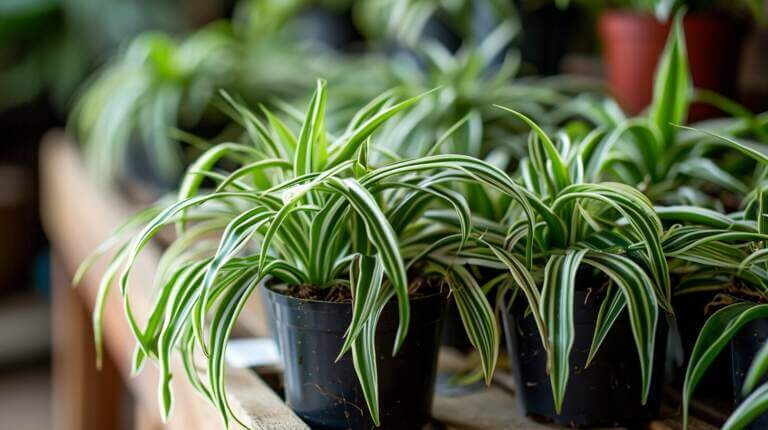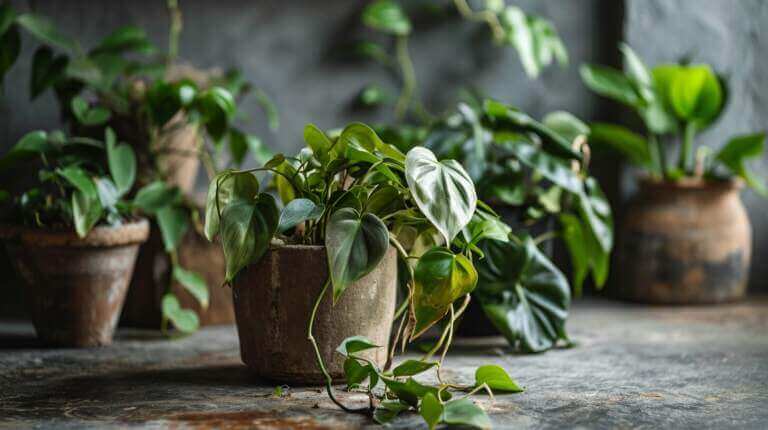Is Parlor Palm Toxic To Cats And Dogs? Understanding Houseplant Pet Safety
As a pet owner, it’s crucial to understand parlor palm house plant safety for pets to create a harmonious living space for your furry friends. Parlor palms, also known as Chamaedorea elegans, are popular houseplants that are non-toxic to pets, making them an excellent choice for pet-friendly homes. By selecting this and other non-toxic plants for your indoor oasis, you can provide a safe environment for both cats and dogs alike while enjoying the beauty of your greenery.
Key Takeaways
- Parlor palms, or Chamaedorea elegans, are non-toxic houseplants safe for pets like cats and dogs.
- Understanding parlor palm safety ensures a pet-friendly environment and allows you to make informed choices about your indoor plant selection.
- Non-toxic plants, including parlor palms, contribute to a healthy and harmonious indoor oasis for both pets and humans.
- Parlor palms are not only pet-safe but also boast air-purifying properties, adding to their appeal as an ideal houseplant choice.
- Educate yourself on safe, pet-friendly houseplants to create a beautiful and worry-free environment for your pets to thrive in.
The Parlor Palm: An Overview of Pet Safety
The Parlor Palm, known by its botanical name Chamaedorea elegans, is a popular houseplant cherished for its tropical fronds and ease of care. Native to the rainforests of Southern Mexico and Guatemala, it flourishes best in well-drained soil, bright indirect light, and temperatures ranging from 65°F to 75°F but can adapt to varying light levels, making it an adaptable plant for indoor spaces.
Identifying the Parlor Palm: Chamaedorea elegans
When it comes to houseplant identification, the key to spotting a genuine Chamaedorea elegans lies in recognizing its distinctive characteristics. Parlor palms typically grow to a height of 3-6 feet and have elegant, feathery, dark green fronds atop slender, bamboo-like stems. As a tropical indoor plant, it can also be distinguished by its slow-growing nature and graceful, palm-like appearance.
Non-Toxic Nature of Parlor Palms: What Makes Them Pet Safe
Parlor palms stand out as an excellent choice for pet owners due to their non-toxic nature, and they are often included in lists of pet safe plants and non-poisonous houseplants. Unlike some houseplants that may contain harmful chemicals or substances causing adverse health effects if ingested by pets, parlor palms pose no such risks. They do not produce toxic substances, ensuring that both cats and dogs can safely coexist with these plants in an indoor environment.
Common Household Plants vs. Parlor Palm: A Comparative Analysis of Toxicity
In comparison with other common household plants that are toxic to pets, such as Sago Palm, Peace Lilies, and Devil’s Ivy, which can cause symptoms like vomiting, diarrhea, and even more severe health issues, parlor palms stand as a safe alternative. They do not contain insoluble calcium oxalate crystals found in plants like Philodendrons, keeping your pets safe from oral irritation and gastrointestinal distress.
| Plant | Toxicity to Pets | Examples of Associated Health Risks |
|---|---|---|
| Parlor Palm (Chamaedorea elegans) | Non-toxic | None |
| Sago Palm | Toxic | Vomiting, diarrhea, liver failure |
| Peace Lily | Toxic | Oral irritation, increased drooling, vomiting, difficulty swallowing |
| Devil’s Ivy | Toxic | Oral irritation, tongue and lip swelling, vomiting, difficulty swallowing |
By comparing parlor palms to other common household plants in terms of toxicity, it becomes evident how essential household plant safety is for pet owners. By choosing parlor palm and other non-toxic houseplants, you can create a beautiful and safe indoor environment for both you and your beloved pets.
Creating a Pet-Friendly Indoor Oasis with a Parlor Palm
A pet-friendly indoor oasis can be easily achieved with the inclusion of parlor palms owing to their safety and aesthetic appeal. They blend well with other non-toxic plants like Spider Plant, Boston Fern, and Ponytail Palm, which are all safe for cats and dogs. By choosing parlor palms and other safe plants, pet owners can decorate their homes with confidence, creating a harmonious living space that promotes the health and happiness of their fur babies.
Parlor palms, with their elegant appearance and graceful fronds, enhance the atmosphere of any room and provide a sense of relaxation and tranquility. Combining these plants with suitable pet-friendly houseplants not only elevates the ambiance but also ensures a safe environment for your pets.
Consider pairing your parlor palm with the following indoor plants safe for pets:
- Spider Plant (Chlorophytum comosum)
- Boston Fern (Nephrolepis exaltata)
- Ponytail Palm (Beaucarnea recurvata)
- Peperomia (Peperomia spp.)
When curating your pet-friendly indoor oasis, be mindful of the needs of each plant. To maintain healthy plants and create a visually stunning space, consider factors such as sunlight requirements, watering needs, and potting arrangements. Developing a green thumb can be an enjoyable, rewarding experience for both you and your pets as you coexist harmoniously in a beautiful, safe environment.
Caring for Your Parlor Palm in a Pet-Inclusive Environment
To maintain a harmonious space for you and your pets, it’s essential to master optimal placement of parlor palms and potting for pet-accessible areas. Ensuring the plant’s location complements your home’s decor, select a sturdy pot that can withstand your pet’s curiosity. Additionally, place the parlor palm in an area with bright, indirect light to help it flourish, while keeping it out of your pets’ reach to prevent accidents or damage.
Understanding parlor palm watering is crucial for the plant’s health and pet safety. Use room temperature water free of chlorine or other chemicals that can harm both the plant and your pets. Allowing the top inch of soil to dry out between waterings prevents overwatering and root rot, keeping the environment healthy and safe for everyone. To properly maintain plant health, adhere to indoor plant watering guidelines and monitor the parlor palm’s needs.
Preventing pet accidents with indoor plants involves a combination of careful placement and pet-safe gardening practices. Keep plants, including parlor palms, out of reach from pets that may be tempted to chew on their leaves. Regularly inspect the stability of your plants to ensure they don’t fall or become hazardous. By educating yourself about plant care and potential risks, you’re protecting your plants and pets, creating a welcoming oasis for the whole family.
FAQ
Are parlor palms toxic to cats and dogs?
No, parlor palms, or Chamaedorea elegans, are considered non-toxic to both cats and dogs, making them a pet-friendly houseplant option.
What other plants can I pair with parlor palms for a pet-friendly indoor oasis?
Safe plants for a pet-friendly indoor oasis include the Spider Plant, Boston Fern, and Ponytail Palm, as they are non-toxic to both cats and dogs.
How do I care for my parlor palm in a pet-inclusive environment?
Place your parlor palm in a sturdy pot that can withstand your pet’s curiosity, and position it in an area with bright, indirect light. Keep the plant out of reach from pets to prevent damage or toppling. Water appropriately, making sure to let the top inch of soil dry out between waterings.
What are the typical symptoms if a pet ingests a toxic plant?
Vomiting, diarrhea, oral irritation, and other health issues may arise if a pet ingests a toxic plant. However, parlor palms are not toxic and do not pose such risks to your pets.
How do parlor palms compare to other common household plants in terms of toxicity?
Unlike plants such as Sago Palm, Peace Lilies, and Devil’s Ivy, which are toxic to pets, parlor palms are non-toxic and safe for pets, making them an ideal choice for pet owners.







